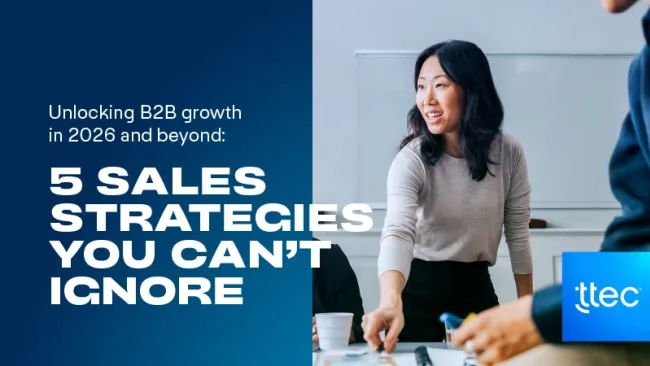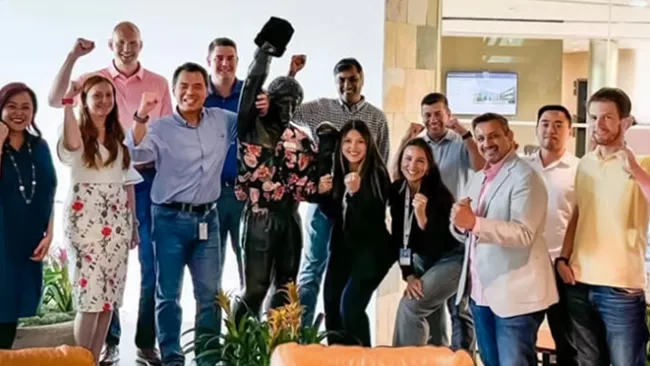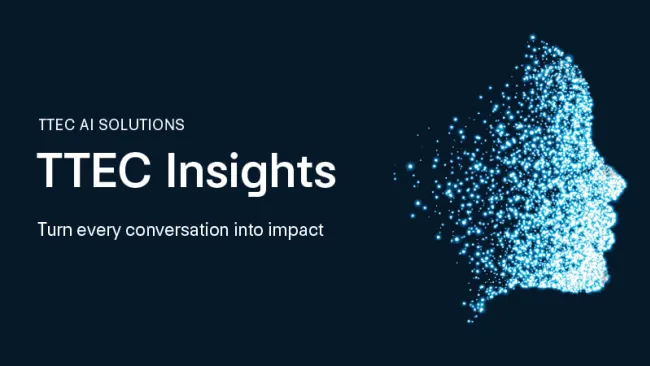Companies are putting digital transformation into hyperdrive, as technologies around machine learning, AI, and automation became a necessary connection to a transformed world.
What lessons do we take from an era that advanced digital capabilities in nearly every industry? To answer this, TTEC held a fireside chat with futurist and CX expert Daniel Newman and Jeff Nicholson, Global Head of CRM at Pegasystems to dive into what digital transformation strategies can enable CX success. Here are the top 5 lessons we took from our conversation:
1: Pave the way with customer centricity
One of the main blockers towards digital transformation success is a lack of Customer Centric Journeys approach. Most organizations are too channel centric or organization or product centric and they develop their customer engagement strategies, channels, touchpoints, systems, and processes based on these siloes. And that is a basic but huge mistake that makes everything wrong, complex, and costly.
It was difficult to achieve before but now any organizations can transform and enable the right digital strategy nimbly and easily without having to change all their underlying systems. Technology allows us to build customer centric journeys highly automated (frictionless for the customer, effortless for the employee) that can be exposed to the relevant digital channel immediately providing a seamless experience to the customers.
2: Don’t slam the breaks on transformation
The climate of the last few months forced many organizations’ hands in digital transformation—most people’s reaction was to halt spending and avoid risks. But the need to be agile and customer-focused never went away.
In a new marketplace that craves digital interactions, lead with a strategy that understands how humans and AI can work together to become more adaptable. Your agents are capable of empathy and advanced problem solving, and investments in automation need to enable them to do this 24/7.
3: Improve and build upon the employee experience
Many legacy systems still require too much effort from employees. Invest in the tools to take to make their lives easier. Automation capabilities can be a digital shoulder for people to lean on by providing relevant suggestions, task assistance, and customer insight.
In addition, consider the new opportunities digital transformation will open internally. Rapidly developing digitalization will need people to build, implement, and test this technology. Consider the new certifications and positions to help employees’ career paths.
4: Put culture at the forefront
Investing in technology by itself is not good enough to future-proof your business. Ensuring a healthy, and prolonged digital transformation begins with a very human element: culture.
Newman explained well-equipped organizations accept a sense of responsibility. These are organizations that know when it’s time to adapt and ethically bring everyone in the company along. “When you have a company that has a strong culture that has the legends, narratives, and morals, that creates and perpetuates the ability to adopt new things,” he said.
Winning organizations have a mindset that embraces new changes, diversity, and nimbleness to meet new expectations.
5: Make the experience better with data
Defining a great customer experience needs to be data-driven. A cultural vision is a necessity, but it also needs to be defined and visualized through data. It’s essential that you gather information to understand how customers interact with your brand, how long are they on email, how casual is messaging, and what defines a good customer experience on every channel.
In a world full of data, consider how you can ethically use it to create a more seamless experience wherever your customer goes. Utilizing information in your digital transformation is the secret to unlocking moments of ‘wow’ with personalization and ease of use.
Transformation has just begun
COVID-19 accelerating digital transformation was only the first step. Starting right now, organizations need to understand how these experiences continue to evolve. This period of uncertainty proved that we could make digital transformation work, now how will people and technology come together to create effortless experiences?
If you would like to hear a continuation of this conversation, listen to Daniel Newman’s follow up on the TTEC webinar, Building CX stability amidst constant change.
















